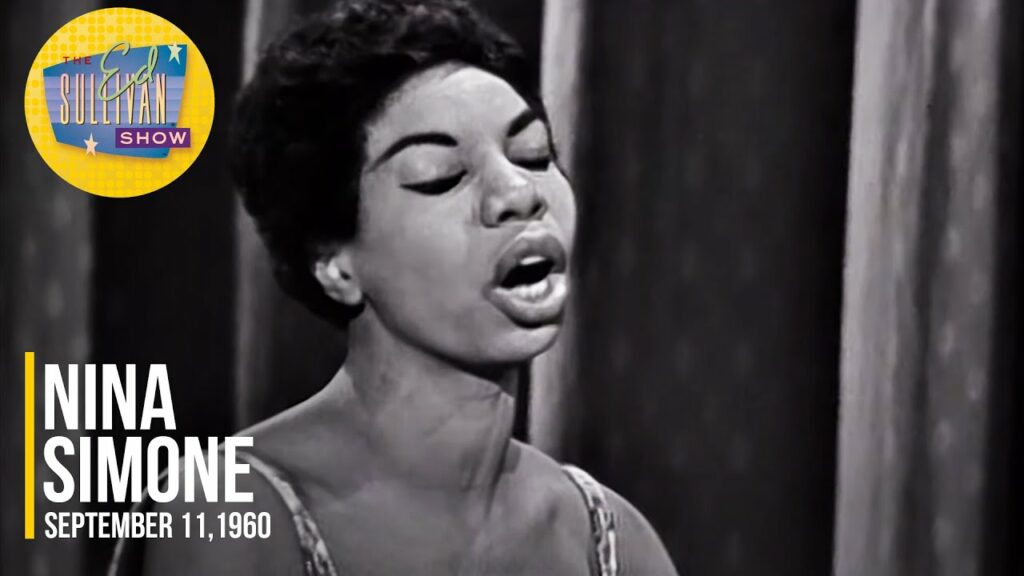Watch Nina Simone’s Flawless Tribute to Johann Sebastian Bach on The Ed Sullivan Show (1960)

Some 80 years ago, in a small North Carolina town, Eunice Waymon, a musically gifted, nine-year-old black girl, began taking piano lessons in the home of an exacting Englishwoman named Muriel Mazzanovich.
At first, young Eunice – the given name of jazz superstar Nina Simone – felt intimidated, recalling in her autobiography, I Put a Spell on You, that they “only played Bach and he seemed so complicated and different:”
In those first lessons, it seemed like the only thing she said was, “You must do it this way, Eunice. Bach would like it this way. Do it again.” And so I would.
As time went on I understood why Mrs. Mazzanovich only allowed me to practice Bach and soon I loved him as much as she did. He is technically perfect… Once I understood Bach’s music I never wanted to be anything other than a concert pianist. Bach made me dedicate my life to music.
Her talent, commitment, and progress were such that other citizens of Tryon, North Carolina pitched in to help her afford a summer session at New York City’s famed Juilliard School, prior to auditioning for Philadelphia’s Curtis Institute of Music.
“I knew I was good enough, but (the Curtis Institute) turned me down,” she says in the documentary, What Happened, Miss Simone? “And it took me about six months to realize it was because I was Black. I never really got over that jolt of racism at the time.”
And yet, she persevered, becoming active in the Civil Rights movement and using the proceeds from her debut album, Little Girl Blue, to further her classical training.
On September 11, 1960, Simone, who had scored a Top 20 hit the previous year with a cover of “I Loves You, Porgy” from George Gershwin’s Porgy and Bess, made her national television debut on The Ed Sullivan Show.
Performing before an all-white studio audience, she paid tribute to both her early training and the genre that would make her a star, imbuing the 1928 jazz standard “Love Me Or Leave Me,” above, with a counterpoint solo in the style of Bach’s Inventions.
It was a skill she had developed during a standing piano gig at Atlantic City’s Midtown Bar and Grill. Its owner demanded that she sing as well as play, and she agreed out of necessity, improvising, experimenting, and occasionally allowing herself flights of classical fancy that did not go unnoticed by local music aficionados.
She prided herself on bringing a classical musician’s absolute concentration to these performances, and expected the audience to abide by a similar code, taking her hands off the keys if a rowdy drunk talked over her, noting that “if they don’t want to listen, I don’t want to play:”
When you play Bach’s music, you have to understand that he’s a mathematician and all the notes you play add up to something – they make sense. They always add up to climaxes, like ocean waves getting bigger and bigger until after a while so many waves have gathered you have a great storm. Each note you play is connected to the next note, and every note has to be executed perfectly or the whole effect is lost.
Throughout her storied career, she found ways to weave Bach-like fugues and other classical references into her work. Witness her 1987 performance of “My Baby Just Cares For Me” at the Montreux Jazz Festival, below.
Related Content
How Nina Simone Became Hip Hop’s “Secret Weapon”: From Lauryn Hill to Jay Z and Kanye West
Nina Simone Writes an Admiring Letter to Langston Hughes: “Brother, You’ve Got a Fan Now!” (1966)
Nina Simone’s Live Performances of Her Poignant Civil Rights Protest Songs
Nina Simone Song “Color Is a Beautiful Thing” Animated in a Gorgeous Video
– Ayun Halliday is the Chief Primatologist of the East Village Inky zine and author, most recently, of Creative, Not Famous: The Small Potato Manifesto and Creative, Not Famous Activity Book. Follow her @AyunHalliday.


